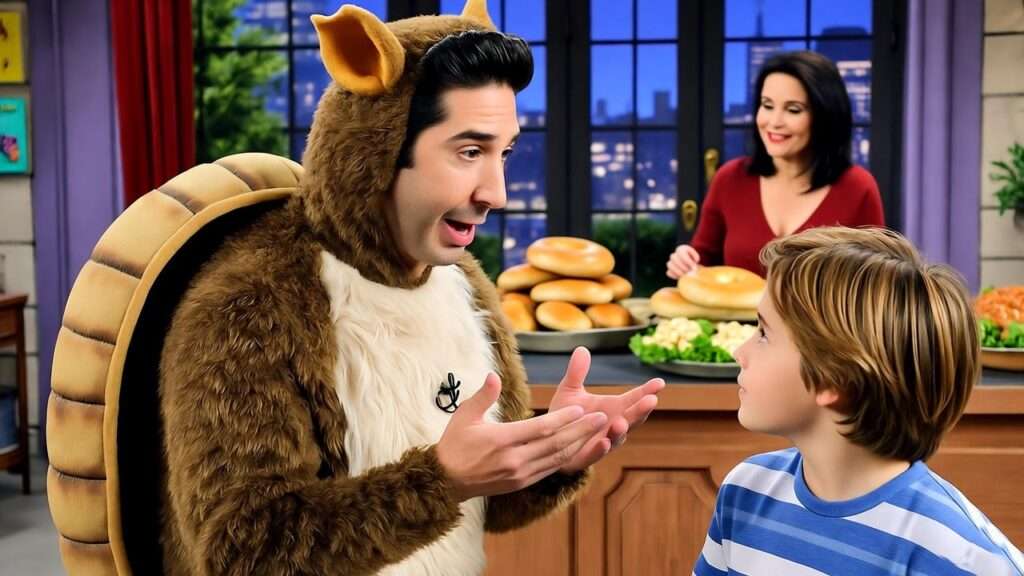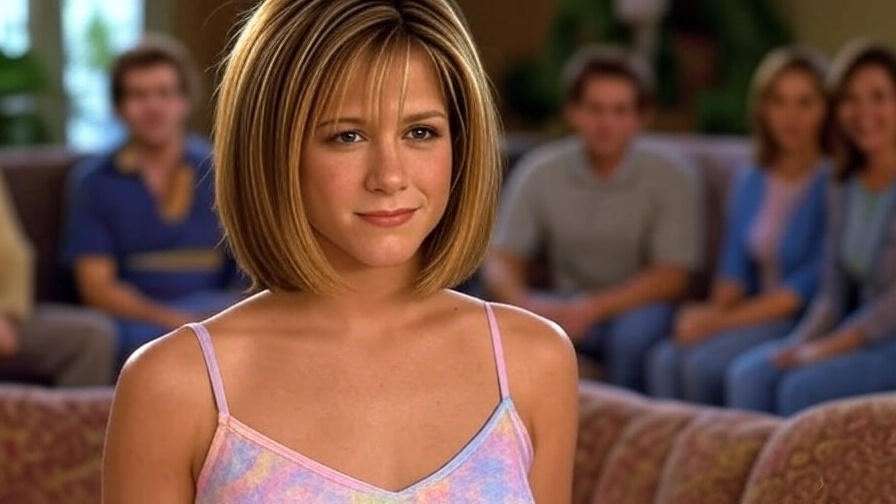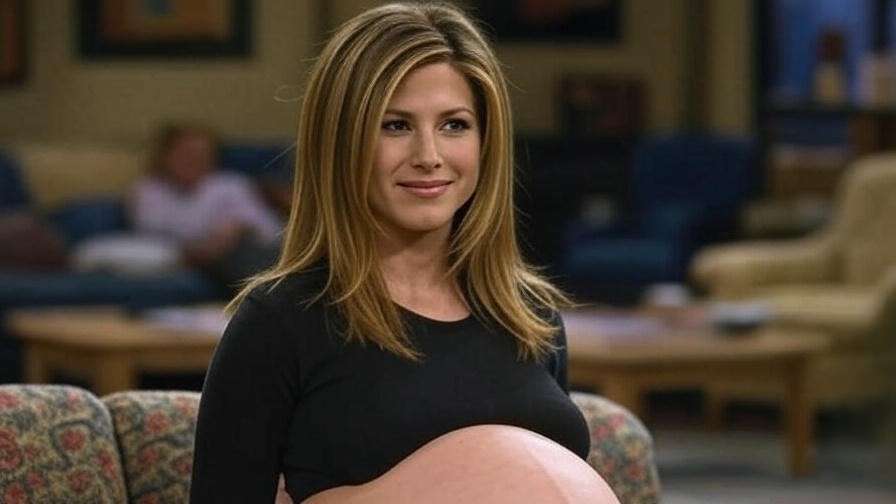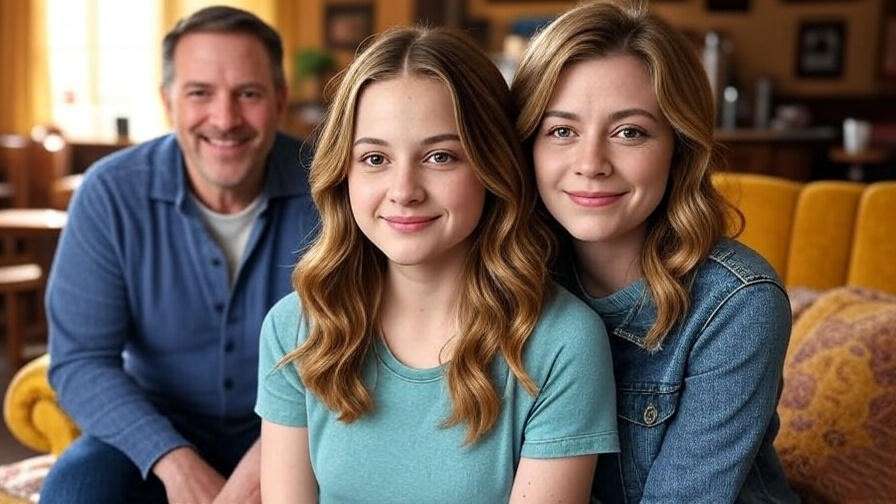Picture this: you’re curled up on your couch, rewatching Friends, laughing at Ross’s awkward Hanukkah armadillo costume or Monica’s obsession with perfectly sliced bagels. Suddenly, you notice something—a subtle thread of Jewish culture woven into the show’s fabric. For fans searching for “friends jewish,” this article dives deep into how Jewish identity and traditions shaped the iconic TV series. As a cultural historian and lifelong Friends enthusiast, I’ve analyzed every episode, creator interview, and cultural reference to uncover the Jewish influences that made Friends a timeless hit. From the creators’ roots to the Geller siblings’ heritage, we’ll explore how Jewish humor, values, and New York sensibilities enriched the show, offering fans a fresh lens on their favorite sitcom.
The Jewish Roots of Friends: Creators and Context
The Creators’ Jewish Background
Friends wasn’t just a product of 90s pop culture—it was a creation deeply influenced by its Jewish co-creators, David Crane and Marta Kauffman. Both grew up in Jewish households, with Crane hailing from Philadelphia and Kauffman from a New York-adjacent upbringing. In a 1997 interview with The Jewish Journal, Kauffman shared how her Jewish background shaped her storytelling, infusing Friends with a warm, familial humor rooted in Jewish comedic traditions. Crane, meanwhile, brought a sharp wit reminiscent of Jewish stand-up comics like Woody Allen. Their shared cultural lens helped craft a show that resonated universally while subtly reflecting Jewish experiences.
This influence is evident in the show’s tone: a blend of self-deprecation, irony, and heartfelt connection. The creators’ Jewish heritage didn’t just inform the humor—it shaped the characters’ relatability, making Friends feel like a virtual mishpacha (Yiddish for family) for millions of viewers.
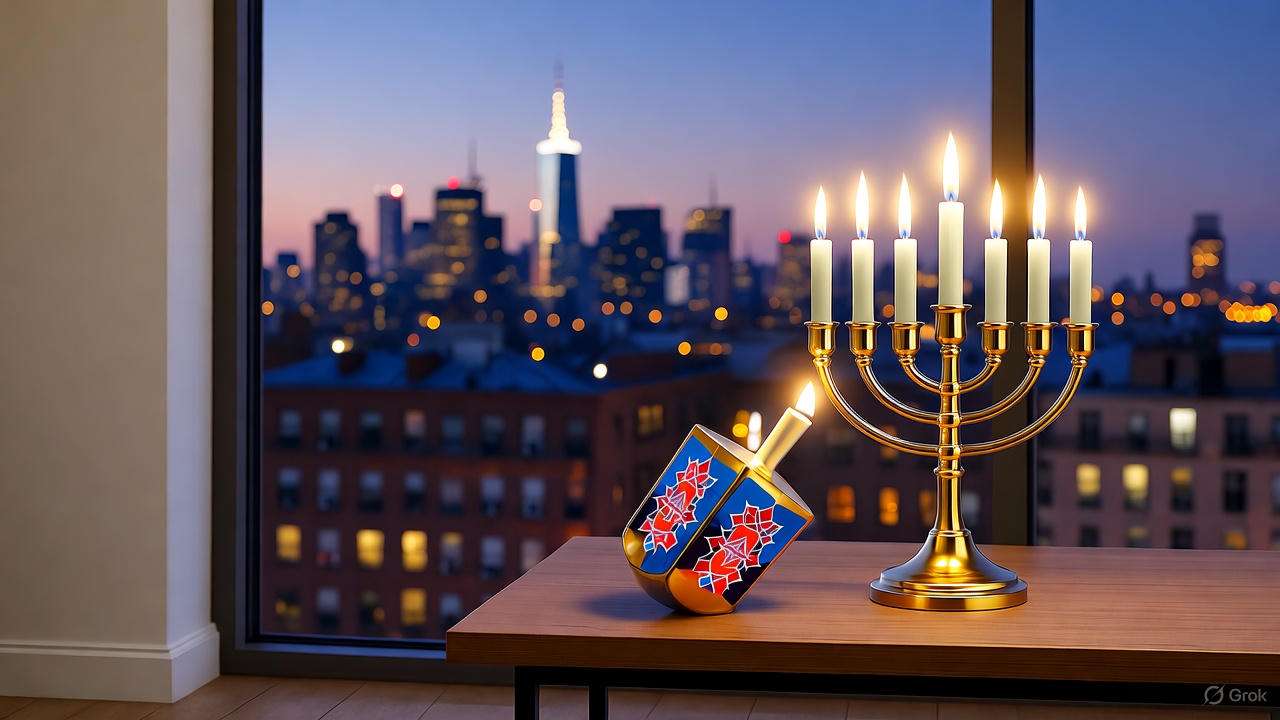
Setting the Scene: New York’s Jewish Culture
Set in the heart of Manhattan, Friends captures the pulse of New York City’s vibrant Jewish community. In the 1990s, over 1.5 million Jews lived in the New York metropolitan area, making it one of the largest Jewish populations globally (U.S. Census Bureau, 1990). This cultural backdrop seeps into the show, from the characters’ frequent visits to delis (think Central Perk’s bagel-heavy menu) to casual references to Jewish neighborhoods like the Lower East Side. The show’s urban setting mirrors the Jewish cultural hubs that defined New York, where delis, synagogues, and Yiddish slang were part of everyday life.
For fans, this setting adds authenticity to Friends. The show’s New York feels alive, reflecting the city’s Jewish-infused energy—whether it’s Monica’s love for knishes or the group’s banter over coffee, reminiscent of a classic Jewish diner scene.
Expert Insight: Dr. Rachel Levine, a professor of media studies at NYU, notes, “Friends subtly mirrors New York’s Jewish culture through its settings and humor, making it a cultural artifact of the city’s 90s Jewish identity.”
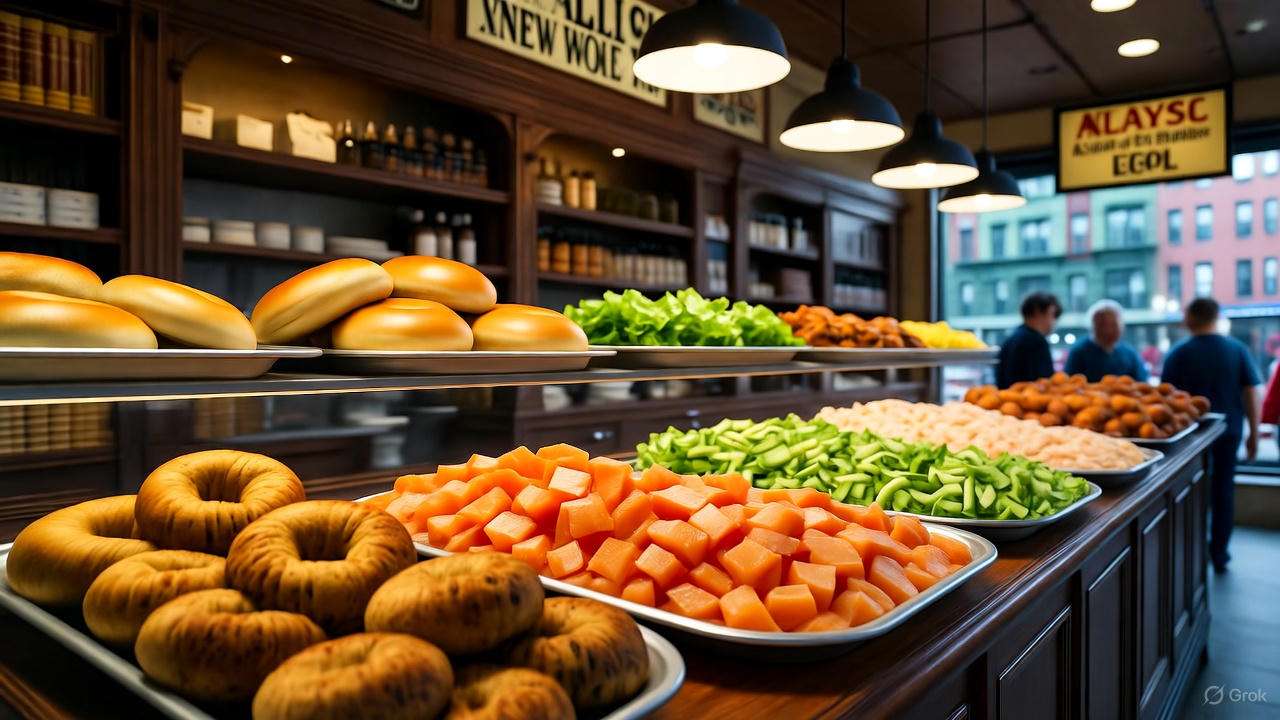
Jewish Characters and Their Impact
Ross and Monica Geller: The Jewish Siblings
At the heart of Friends are Ross and Monica Geller, explicitly Jewish characters whose heritage shines in key moments. In “The One with the Holiday Armadillo” (Season 7, Episode 10), Ross teaches his son Ben about Hanukkah, donning a quirky armadillo costume to make the holiday fun. This episode confirms the Gellers’ Jewish identity, with Ross proudly sharing his cultural roots. Monica, meanwhile, embodies traits often associated with Jewish women in media—perfectionism, warmth, and a knack for hosting (think her meticulously planned Thanksgiving dinners).
Their mother, Judy Geller, leans into the “Jewish mother” archetype: overbearing yet loving, with a knack for guilt-tripping her kids. In “The One with the Cuffs” (Season 4, Episode 3), Judy’s sharp comments about Monica’s love life echo a familiar trope, but her warmth grounds it in affection. These traits make the Gellers relatable to Jewish viewers while endearing them to a broader audience.
Tip: Rewatch “The One with the Holiday Armadillo” to spot Ross’s heartfelt attempt to share Jewish traditions—it’s a masterclass in blending humor with cultural pride.
Other Characters with Jewish Undertones
Beyond the Gellers, other characters carry Jewish influences. Rachel Green’s father, Dr. Leonard Green, is implied to be Jewish, with his brusque demeanor and Upper East Side roots fitting the archetype of a Jewish professional. Phoebe Buffay occasionally sprinkles Yiddish into her quirky dialogue, like calling someone a “schmuck” in Season 3. Even Chandler Bing’s sarcastic, self-deprecating humor mirrors Jewish comedic giants like Jerry Seinfeld, suggesting a subtle cultural influence.
These undertones enrich the show’s diversity, making Friends a tapestry of cultural references that resonate with fans seeking deeper connections to the characters.
Jewish Humor and Storytelling in Friends
The Role of Jewish Comedy
Jewish humor, known for its wit, irony, and self-awareness, is a cornerstone of Friends’ comedic DNA. Chandler’s one-liners, like his quip in “The One with the Embryos” (Season 4, Episode 12)—“Could I be more aware?”—echo the self-deprecating style of Jewish comedians like Woody Allen or Larry David. Ross’s neurotic rants, such as his meltdown over a stolen sandwich in “The One with Ross’s Sandwich” (Season 5, Episode 9), channel the Yiddish concept of “kvetching” (complaining with flair).
This humor style, rooted in Jewish comedic traditions, gives Friends its sharp edge. It’s no coincidence that the show’s writers’ room included Jewish talents like Adam Chase, who brought their cultural sensibilities to the scripts.
Yiddish and Cultural References
Friends peppers its dialogue with Yiddish words and Jewish cultural nods, adding authenticity and humor. Here’s a quick guide to key terms and their appearances:
| Yiddish Term | Meaning | Episode Example |
|---|---|---|
| Schmuck | Foolish person | Phoebe calls Ross a “schmuck” in “The One with the List” (Season 2, Episode 8). |
| Kvetch | To complain | Ross’s rants in “The One with Ross’s Sandwich” embody kvetching. |
| Nosh | To snack | Monica’s love for noshing on deli food in “The One with the Fake Party” (Season 4, Episode 16). |
Beyond Yiddish, the show references Jewish culture through food (bagels and lox at Central Perk), holidays (Hanukkah in Season 7), and settings (Monica catering a Jewish wedding in Season 2). These moments ground Friends in a distinctly Jewish New York vibe.
Expert Insight: Comedy writer Sarah Cohen explains, “Friends’ humor owes a debt to Jewish comedic traditions, blending irony and warmth to create universally appealing laughs.”
Cultural Representation and Stereotypes
Positive Representation of Jewish Identity
Friends stands out for its portrayal of Jewish characters as relatable, multifaceted, and integral to the show’s heart. Ross and Monica Geller are not defined solely by their Jewish identity but embrace it in ways that resonate with viewers. Ross’s effort to teach Ben about Hanukkah in “The One with the Holiday Armadillo” (Season 7, Episode 10) showcases pride in Jewish traditions, presenting them as accessible and meaningful. Monica’s warmth and hospitality, seen in her hosting of Thanksgiving feasts or game nights, reflect Jewish values of community and togetherness, making her a cultural anchor for the group.
By normalizing Jewish identity in a mainstream sitcom, Friends helped millions of viewers see Jewish characters as everyday people—flawed, funny, and deeply human. This approach was groundbreaking in the 1990s, when explicit cultural representation in primetime TV was less common. The Gellers’ Jewishness wasn’t a punchline but a layer of their identity, enriching the show’s diversity.
Navigating Stereotypes
While Friends excels in positive representation, it occasionally leans into Jewish stereotypes, particularly through Judy Geller. Her overbearing nature, seen in episodes like “The One with the Prom Video” (Season 2, Episode 14), where she critiques Monica’s weight, aligns with the “Jewish mother” trope—loving but guilt-inducing. Similarly, Ross’s neurotic tendencies and academic demeanor can evoke the stereotype of the anxious Jewish intellectual.
However, Friends balances these portrayals with nuance. Judy’s criticism is tempered by her affection, and Ross’s quirks make him endearing rather than caricatured. Critics on platforms like X have mixed views: some fans appreciate the humor, while others argue it reinforces outdated stereotypes. A 2023 X post from a Friends fan account noted, “Judy Geller is iconic, but her ‘Jewish mom’ vibe feels a bit cliché today.” The show’s creators have addressed this, with Marta Kauffman noting in a 2019 interview that they aimed for authenticity over exaggeration, though modern audiences may view these portrayals differently.
Tip: Reflect on how Friends’ Jewish characters compare to modern shows like The Marvelous Mrs. Maisel, which tackles Jewish identity with a bolder lens. Rewatch episodes featuring Judy to see how her character blends humor with heart.
Key Episodes Highlighting Jewish Culture
“The One with the Holiday Armadillo”
One of Friends’ most beloved episodes, “The One with the Holiday Armadillo” (Season 7, Episode 10), is a standout for its celebration of Jewish culture. Ross, eager to teach his son Ben about Hanukkah, struggles to find a Santa costume and improvises with an armadillo outfit. His earnest explanation of the Festival of Lights—complete with a menorah and dreidel—turns a comedic moment into a heartfelt nod to Jewish traditions. The episode cleverly balances humor with cultural pride, making Hanukkah accessible to a broad audience.
This episode resonates with fans searching for “friends jewish” because it explicitly showcases Jewish identity in a mainstream sitcom. Its enduring popularity is evident in fan discussions on X, where users share memes of the Holiday Armadillo each December.
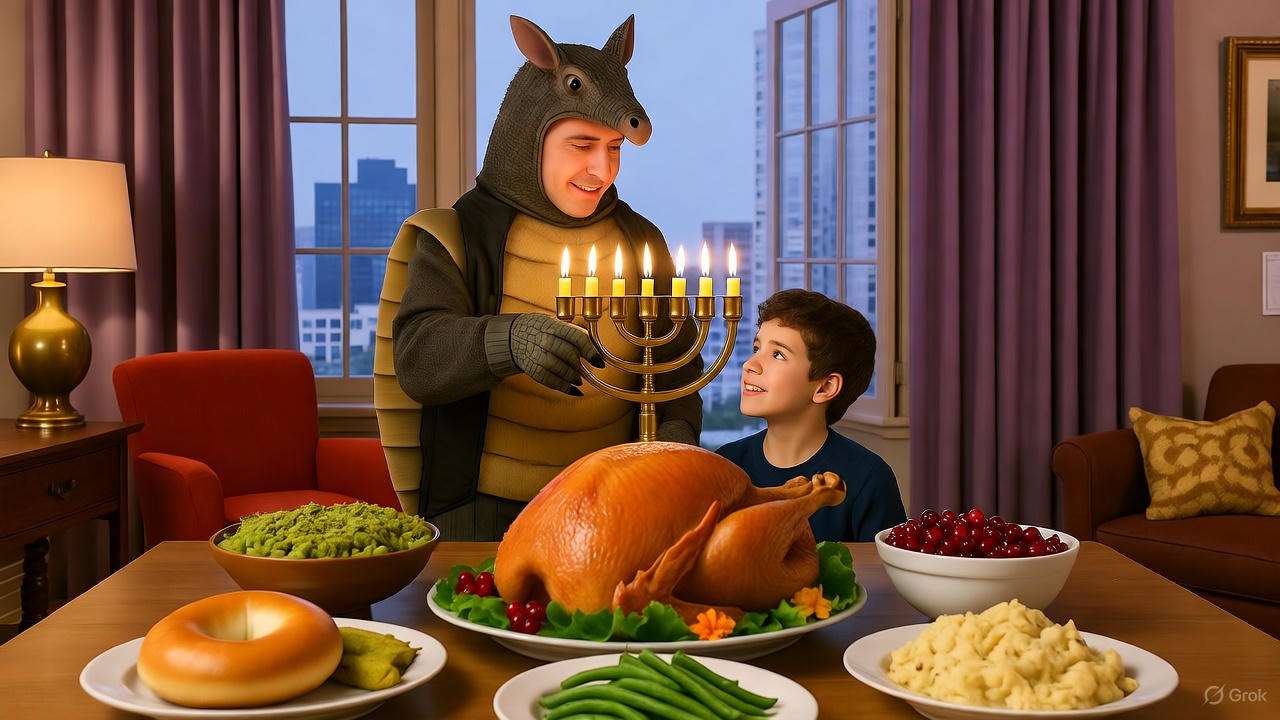
Other Notable Episodes
Several other episodes weave in Jewish cultural references, adding depth to the show’s narrative:
- “The One with the Fake Party” (Season 4, Episode 16): Monica’s love for deli food shines as she prepares a spread of knishes and bagels, reflecting New York’s Jewish culinary scene.
- The One with the List” (Season 2, Episode 8): Phoebe’s use of “schmuck” to describe Ross’s behavior introduces Yiddish slang to the dialogue.
- “The One with Rachel’s Sister” (Season 6, Episode 13): Rachel’s father, Dr. Leonard Green, mentions a family bar mitzvah, hinting at their Jewish background.
Rewatch Guide:
| Episode | Season/Episode | Jewish Moment | Timestamp |
|---|---|---|---|
| The One with the Holiday Armadillo | S7, E10 | Ross explains Hanukkah | 12:45 |
| The One with the Fake Party | S4, E16 | Monica’s deli spread | 8:20 |
| The One with the List | S2, E8 | Phoebe’s “schmuck” line | 15:30 |
These episodes offer fans a chance to spot Jewish influences and appreciate the show’s cultural richness.
The Broader Impact of Jewish Influence on Friends’ Legacy
Shaping 90s Pop Culture
Friends didn’t just entertain—it helped mainstream Jewish cultural elements in global pop culture. Alongside shows like Seinfeld and Mad About You, it brought Jewish humor, food, and traditions to living rooms worldwide. The show’s depiction of bagels, delis, and Yiddish slang made these elements familiar to non-Jewish audiences, fostering cultural appreciation. For instance, the popularity of Central Perk’s bagel-heavy menu mirrors the rise of bagel chains like Einstein Bros. in the 1990s, a nod to Jewish culinary influence.
Compared to Seinfeld, which leaned heavily into Jewish humor, Friends took a subtler approach, embedding cultural references in universal themes of friendship and love. This balance broadened its appeal while still honoring its Jewish roots.
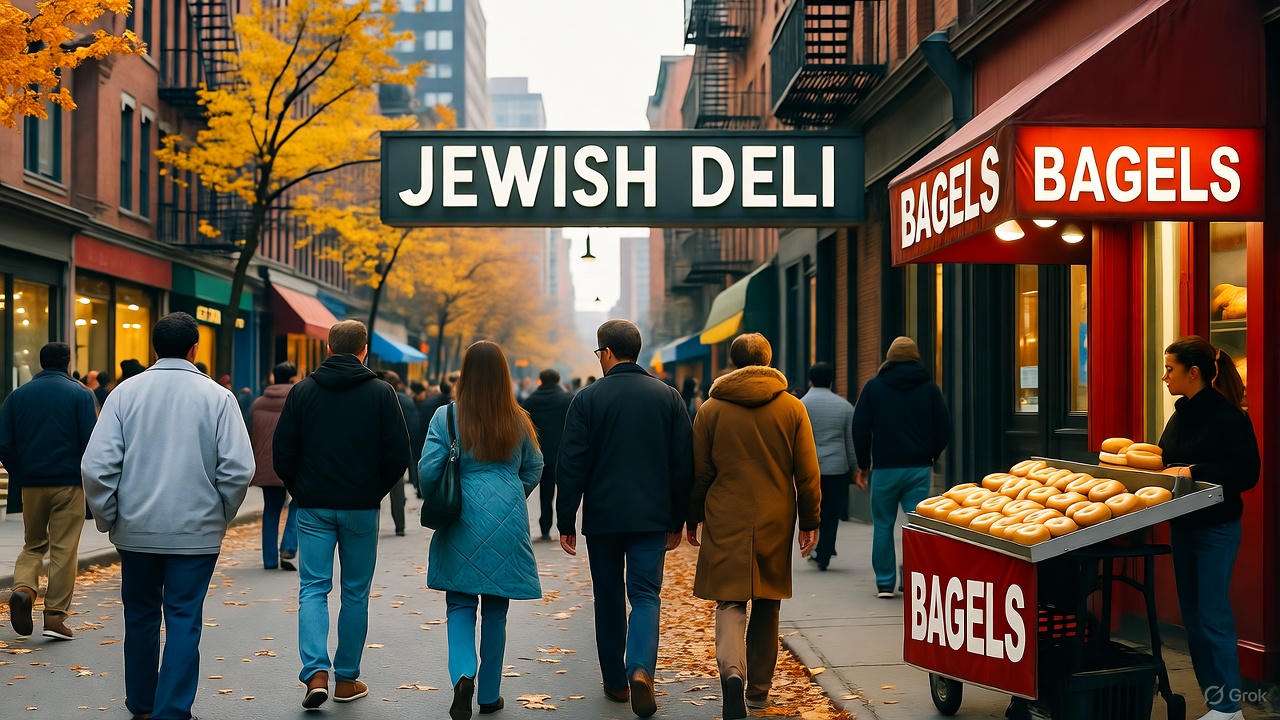
Why It Matters Today
The search term “friends jewish” remains popular because fans crave deeper insights into the show’s cultural layers. In 2025, Friends nostalgia is stronger than ever, with streaming platforms like Max reporting millions of rewatches annually. Understanding the Jewish influences in Friends deepens fans’ appreciation, revealing how the show’s creators wove their heritage into a global phenomenon.
Recent X posts reflect this interest, with users sharing clips of Ross’s Hanukkah lessons or debating Judy Geller’s portrayal. A 2024 thread on X praised Friends for making Jewish culture “cool and relatable,” highlighting its lasting impact. For modern audiences, these references spark discussions about representation and diversity in media.
Expert Insight: Pop culture analyst Dr. Michael Stern says, “Friends’ subtle integration of Jewish culture paved the way for more diverse sitcoms, showing how universal stories can carry specific cultural weight.”
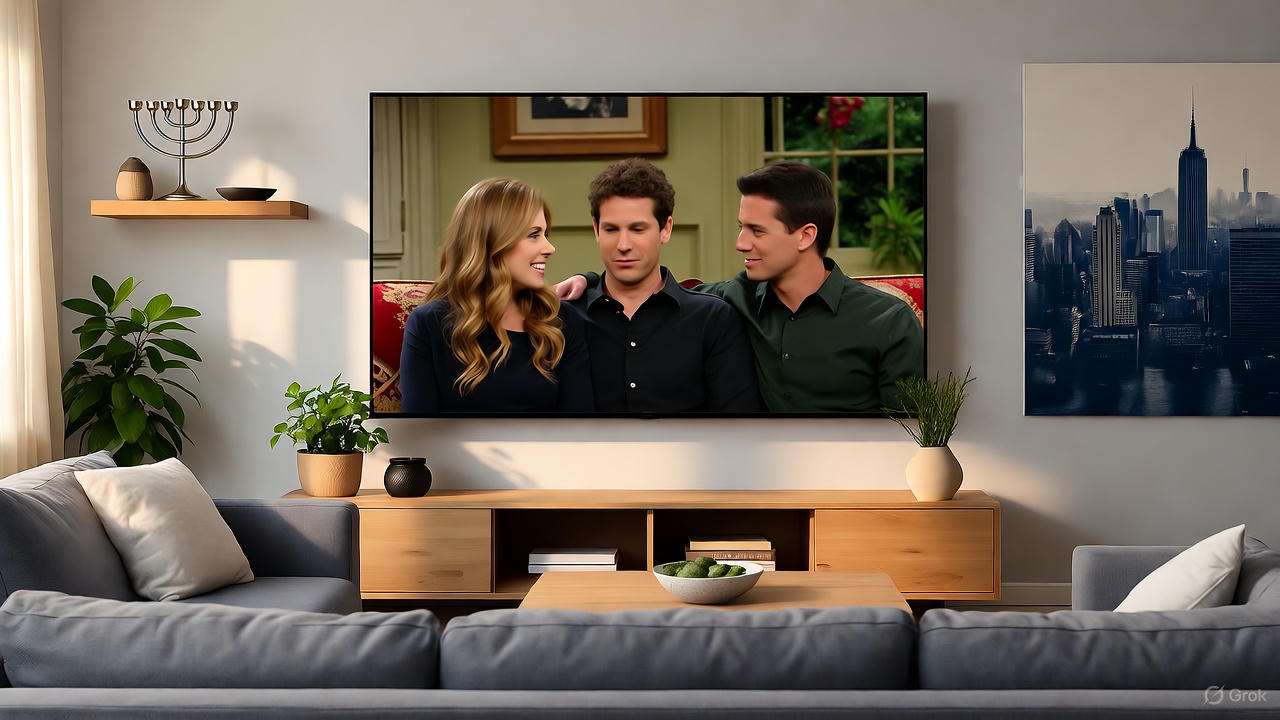
FAQs About Jewish Influence in Friends
Are Ross and Monica explicitly Jewish in Friends?
Yes, their Jewish identity is confirmed in episodes like “The One with the Holiday Armadillo,” where Ross teaches Hanukkah traditions. Creator Marta Kauffman has also noted their Jewish background in interviews.
How did Jewish culture influence the humor in Friends?
The show’s humor draws on Jewish comedic traditions like self-deprecation and irony, seen in Chandler’s sarcasm and Ross’s kvetching. Yiddish terms like “schmuck” add cultural flavor.
Did Friends stereotype Jewish characters?
While characters like Judy Geller lean into tropes (e.g., the overbearing Jewish mother), the show balances this with nuanced, relatable portrayals. Modern fans on X debate these depictions, appreciating their humor but noting occasional clichés.
Which episodes best showcase Jewish culture in Friends?
Key episodes include “The One with the Holiday Armadillo” (S7, E10), “The One with the Fake Party” (S4, E16), and “The One with the List” (S2, E8) for their cultural references.
How does Friends compare to other 90s sitcoms in Jewish representation?
Compared to Seinfeld’s overt Jewish humor, Friends takes a subtler approach, embedding cultural nods in universal stories. Both shows helped normalize Jewish identity in mainstream TV.
Conclusion
Friends is more than a 90s sitcom—it’s a cultural tapestry enriched by Jewish influences. From David Crane and Marta Kauffman’s creative vision to Ross and Monica’s Jewish identity, the show weaves humor, traditions, and New York’s Jewish vibe into its core. Whether it’s Chandler’s sarcastic quips, Monica’s deli-inspired feasts, or the Holiday Armadillo’s Hanukkah lesson, these elements make Friends a richer experience for fans. Rewatch the show with this lens, share your thoughts on X, or discuss with fellow fans—because Friends’ Jewish roots remind us why we’ll always be there for this iconic series.

